AdWords Remarketing: Getting Started and Best Practices to Follow
A visitor lands on one of your pages from a search but decides not to purchase and clicks through to another site. In most cases that visitor would be gone forever. But what if it was possible to bring that visitor back through highly targeted ads?
A visitor lands on one of your pages from a search but decides not to purchase and clicks through to another site. In most cases that visitor would be gone forever. But what if it was possible to bring that visitor back through highly targeted ads?
This is where remarketing comes in.
What is remarketing?
Remarketing (also known as retargeting) works amazingly well.
It allows you to target visitors who have previously visited your site but left without taking a desired action (e.g. making a purchase). Adding a tracking pixel to your site lets you “follow” lost visitors with highly targeted ads as they browse the web.

Just like with AdWords, you can even segment your target audience to show specific types of ads based on the pages previously visited. If someone lands on a product page but exits before purchasing, remarketing lets you display ads that are related to the products that were viewed. This type of marketing exposure can direct previous visitors back to your site and increase conversions.
Remarketing campaigns through AdWords can ultimately contribute to your bottom line.
Here we look at the steps to getting started and best practices to follow.
How to Create a Remarketing Campaign
To get started, login to your AdWords account. Click on the red +Campaign button and select Display Network Only from the dropdown list.
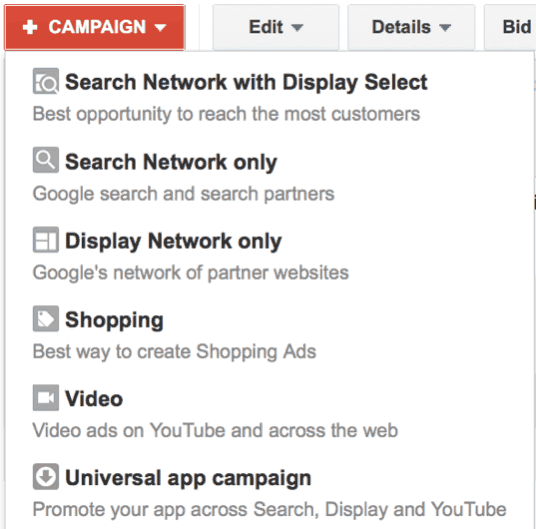
The Display Network refers to a network of sites where Adwords ads appear. Google claims this network reaches over 90% of online users worldwide. Starting your remarketing campaign here is a great place to start. The next page is where you can define your marketing objectives.
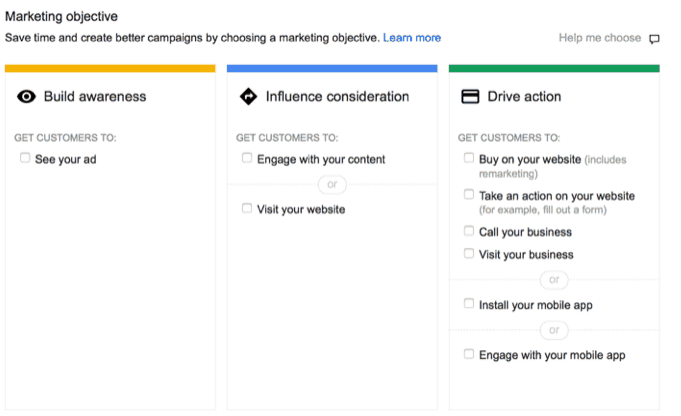
Are you looking to build brand awareness with your campaign? Or do you want visitors to take a more specific action such as calling your business or making a purchase?
Think about your objectives with remarketing and what you want to achieve. Then go through the guided process. Enter in a campaign name, choose the locations to target, set a bidding strategy, and a daily budget. Then click the ‘Save and continue’ button.
The next page has additional options including how to target your ads.
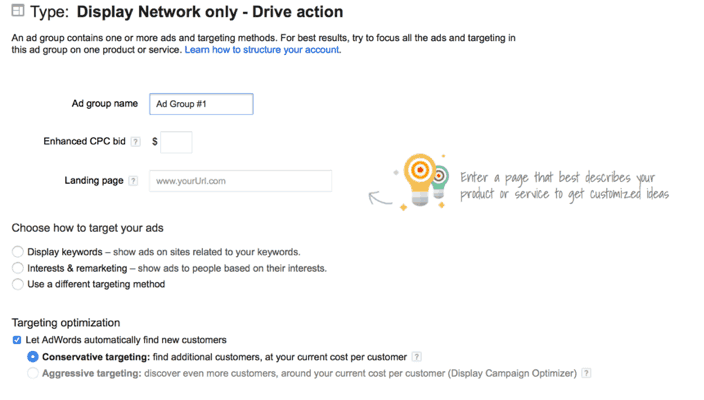
Be sure to select the ‘Interests & remarketing’ option. In the dropdown list, select ‘Remarketing lists’ to target customers who have previously visited your site.
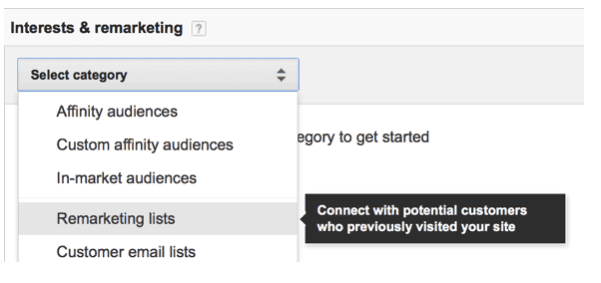
Then click on the arrow next to the ‘All Visitors’ option.
The next page is where you can upload and create your ads.
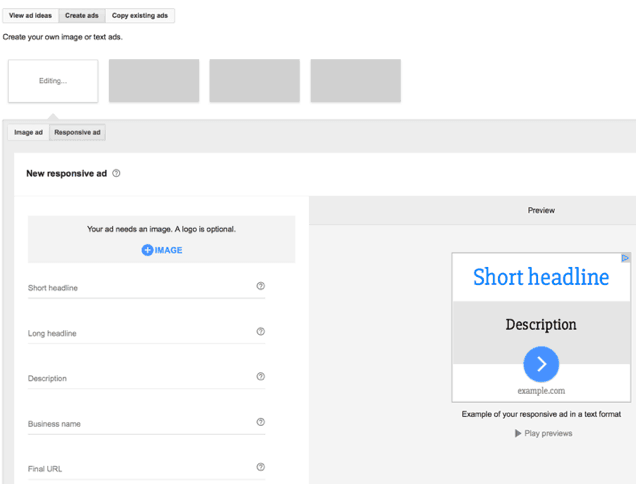
Your ads are perhaps the most important component of your remarketing campaign so take the time to create an engaging ad. Use the Preview pane to get an idea of how your ad will look like on other sites. You can enter in your billing information on the next page and confirm your ads before they go live. Note that you will need to add snippets of code to your site.
Getting started with a remarketing campaign can be overwhelming.
There are many different aspects to take into consideration.
But when implemented correctly, remarketing can be a powerful medium to drive more sales. Here we look at several best practices to follow before launching your first ad.
1. Segment Your Audience to Create Highly Targeted Ads
Targeting capabilities are perhaps the most powerful aspects of remarketing campaigns.
If a visitor lands on a pricing page, they have expressed interest in your product but for whatever reason decided not to purchase. This visitor is farther along the buying cycle than someone who landed on your blog. These are exactly the kinds of individuals you want to target.
With AdWords, you can segment your audience:
- By visits to your homepage: Visitors who only land on your homepage are likely still in the research phase. Remarketing ads you create should take this into account so they should be more focused on generating brand awareness.
- By visits to product pages: If a visitor lands on a product page, your ads should be tailored around that product or category. Your ads will be far more relevant and entice visitors to complete their purchase.
- By visits to your blog: Visitors to your blog are still engaging with your company but in a different manner compared to landing on a product page. For these visitors, you will want to include strong call to action offers in your ads and link to an optimised landing pages.
- By downloaded content: Visitors who have previously downloaded content from your site such as an ebook can be targeted with landing pages that link to additional content they can download.
Visitors leave websites for various reasons. They might still be researching their options or they may have gotten distracted by something else. Segmenting your audience can be incredibly powerful as you can bring visitors back to your site depending on the pages they visited.
2. Add Conversion Pixels to Your Site
If a visitor has already purchased from your site, you would want to exclude that customer from your remarketing campaign. Otherwise you are only wasting advertising dollars that could have been spent bringing in new customers.
So what should you do?
Add conversion pixels to your pages.
Conversion tracking is a way to track completed actions on your site whether visitors make a purchase, fill out a form or even sign up for a newsletter. This is particularly useful as you can see exactly which aspects of your campaign are converting and is definitely something you want to implement in your remarketing campaign.
For example, if a customer has already purchased a certain product you wouldn’t want to keep advertising the same product to that individual. Instead you might create ads that highlight different products or services that your business offers. Or if a visitor fills out a lead generation form on your page but has yet to make a transaction, you could create ads that leads those visitors to optimised landing pages with more information.
These are only some examples of what you can do with conversion tracking. Learn more about how to setup conversion tracking here.
3. Limit Where Your Ads Are Displayed
Google boasts that its Display Network reaches 90% of online users.
But there are likely sites that you wouldn’t want your ads to be displayed on. Fortunately, you can exclude certain site categories within your remarketing campaign.
In the ‘Display Network’ tab, click on ‘Placements’ and scroll to the bottom.
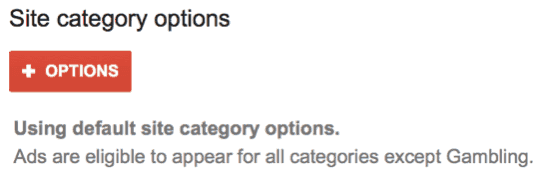
Click on the red ‘+Options’ button and you will see the following exclusion options on the next page:
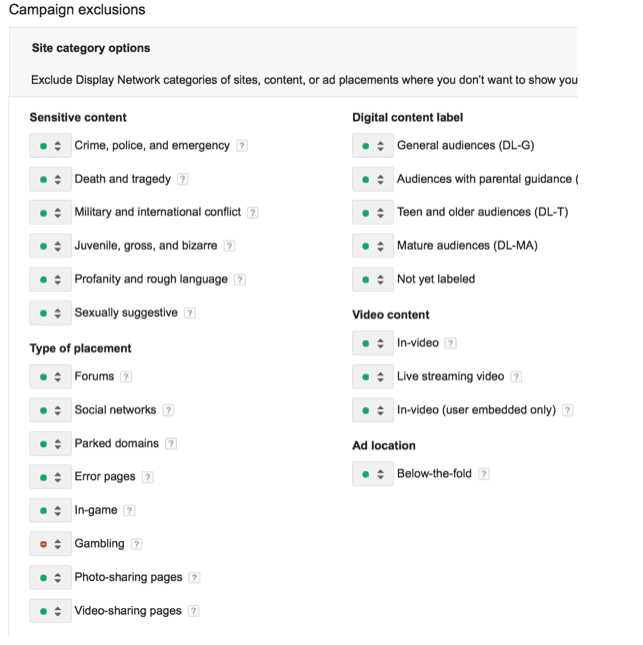
You can immediately see which categories you would want to exclude from your campaigns such as parked domains and error pages. As your campaign progresses, look through the placement report to identify additional categories that aren’t appropriate or relevant.
4. Experiment With Different Ads and Offers
Your remarketing campaign is finally live and resulting in more conversions.
But don’t simply stop there.
As you monitor your progress, it is a good idea to test and experiment with different ads. Doing so gives you more insight on what works and what doesn’t. If conversions are poor for a certain ad, it is likely due to the ad itself. The best way to find out is to create a new ad with changes to the copy.
Change the offer: If your ads aren’t converting, the offer likely needs some work. You can encourage more visitors to click through to your site by making the offer more enticing. Offer a free trial, give an exclusive discount or even include a free gift with a purchase.
Change the benefit: Consumers feel more compelled to make a purchase if they can see how they benefit from a product or service. Instead of focusing on features, change your copy to reflect the benefits that consumers can expect.
After creating a new ad, remember to allow enough time to pass so you can track and measure the results. This way you can assess whether your efforts are resulting in more sales or not.
Conclusion
Remarketing lets you reach visitors who have visited your website as they browse the web.
Targeted ads can bring these visitors and result in more conversions for your business. With AdWords, you can even segment your audience to make your ads highly targeted. Remarketing can be an incredibly successful tactic and increase the overall return on your PPC efforts. Getting started is rather straightforward but be sure to follow the best practices highlighted here before your first ad goes live.
